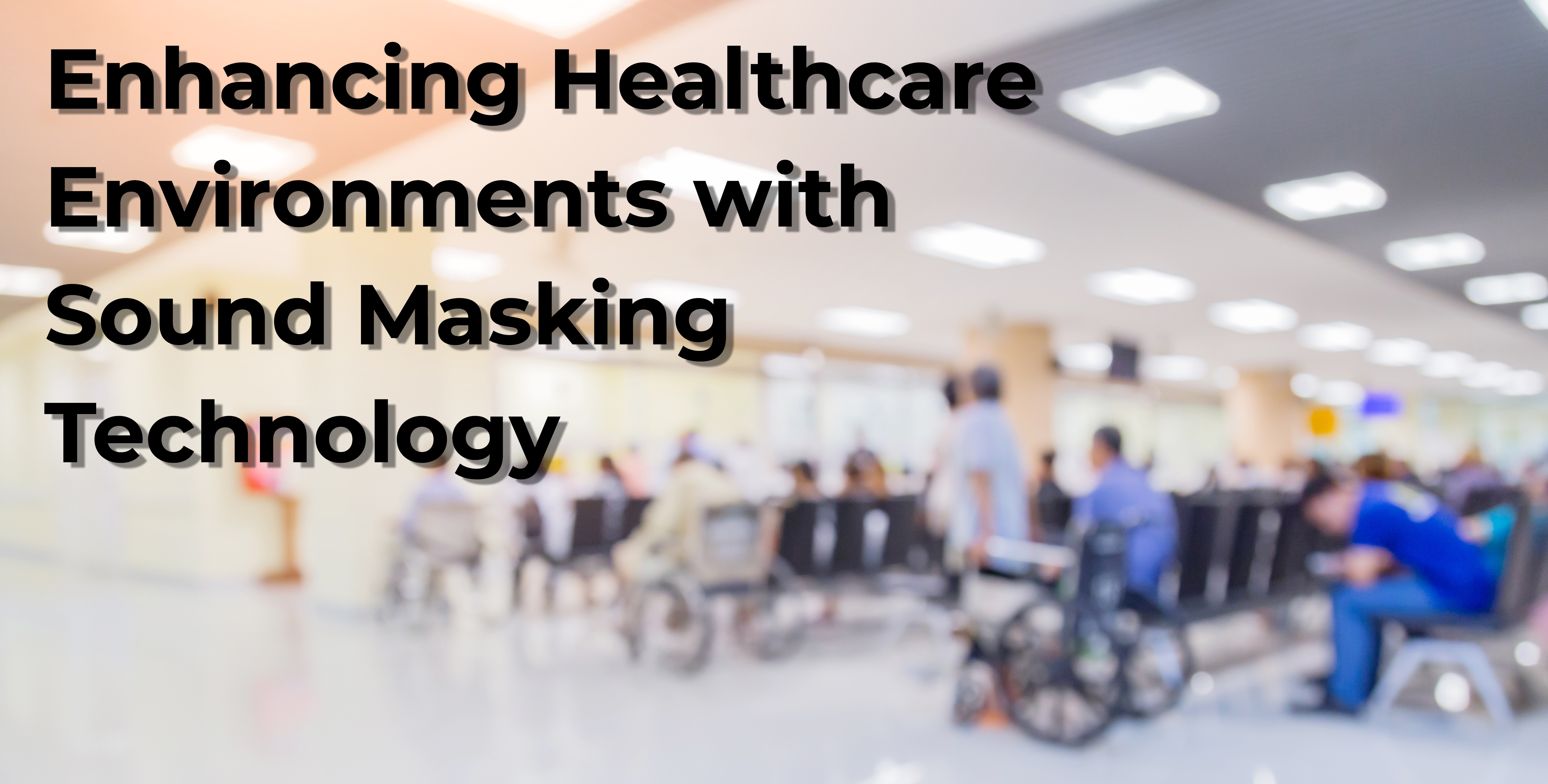
In the fast-paced world of healthcare, where privacy, patient satisfaction, and efficiency are paramount, finding effective solutions to address acoustic challenges is crucial. Sound masking technology has emerged as a powerful tool to create a quieter, more confidential, and comfortable healthcare environment. In this blog post, we will explore the various benefits of sound masking technology and its impact on the healthcare industry.
The healthcare environment encompasses both clinical and administrative spaces, each with its unique sound challenges. Clinical areas such as patient rooms, corridors, nursing stations, exam rooms, and waiting areas are filled with conversations, potentially compromising patient privacy. On the other hand, administrative spaces like C-level offices, meeting rooms, and call centers handle sensitive information that requires protection. Sound masking technology offers a comprehensive solution to address these challenges effectively.
Several standards and regulations have emphasized the importance of sound masking in healthcare environments. Let's explore a few key drivers:
HCAHPS (Hospital Consumer Assessment of Healthcare Providers and Systems):
HCAHPS plays a significant role in healthcare reform, giving patients a voice in rating their care experience. Low sleep scores, in particular, can have financial implications for healthcare facilities. Medicare reimbursement is linked to sleep scores, making it essential for hospitals to improve below-average scores. Sound masking technology helps improve patient sleep scores by reducing transient sounds and providing a more restful environment. This, in turn, leads to enhanced patient satisfaction and a positive impact on the healthcare provider's revenue.
HIPAA (Health Insurance Portability and Accountability Act):
HIPAA aims to protect patient privacy, including verbal communication. Healthcare designers and practitioners must consider privacy protection in their design practices, including acoustics. Sound masking, with its ability to cover speech and enhance speech privacy, is a valuable tool to meet HIPAA requirements. By reducing the intelligibility of conversations, sound masking ensures that sensitive patient information remains confidential.

ESG (Environmental, Social, and Governance):
ESG factors are used to evaluate a company's sustainability and ethical impact. Sound masking technology contributes to the social element of ESG by adding privacy, minimizing distractions, and improving overall comfort and productivity. By implementing sound masking solutions, healthcare facilities demonstrate their commitment to creating a socially responsible environment for patients, staff, and visitors.
LEED (Leadership in Energy and Environmental Design):
LEED certification focuses on sustainable and energy-efficient building design. Acoustics is an important component of indoor environmental quality, and LEED v4.1 includes specific requirements related to acoustics. Sound masking technology can help healthcare facilities meet these requirements by improving the Sound Transmission Class (STC) ratings of building materials. By increasing privacy without compromising design, sound masking also offers cost-saving benefits by reducing the need for additional soundproofing materials.
WELL Building Standard:
The WELL Building Standard promotes the creation of spaces that enhance occupants' health and well-being. Sound masking technology aligns with this goal by creating a more comfortable and stress-free environment for patients, staff, and visitors. Improved privacy, reduced distractions, and increased productivity are among the many benefits that sound masking brings to healthcare facilities seeking WELL certification.
Sound masking technology offers a comprehensive solution to address acoustic challenges in the healthcare environment. By improving patient sleep scores, meeting HIPAA requirements, aligning with ESG principles, contributing to LEED certification, and supporting the WELL Building Standard, sound masking proves its effectiveness as an essential tool in healthcare facility design. Embracing sound masking technology not only enhances patient satisfaction and privacy but also demonstrates a commitment to providing high-quality care in a sustainable and socially responsible manner.


